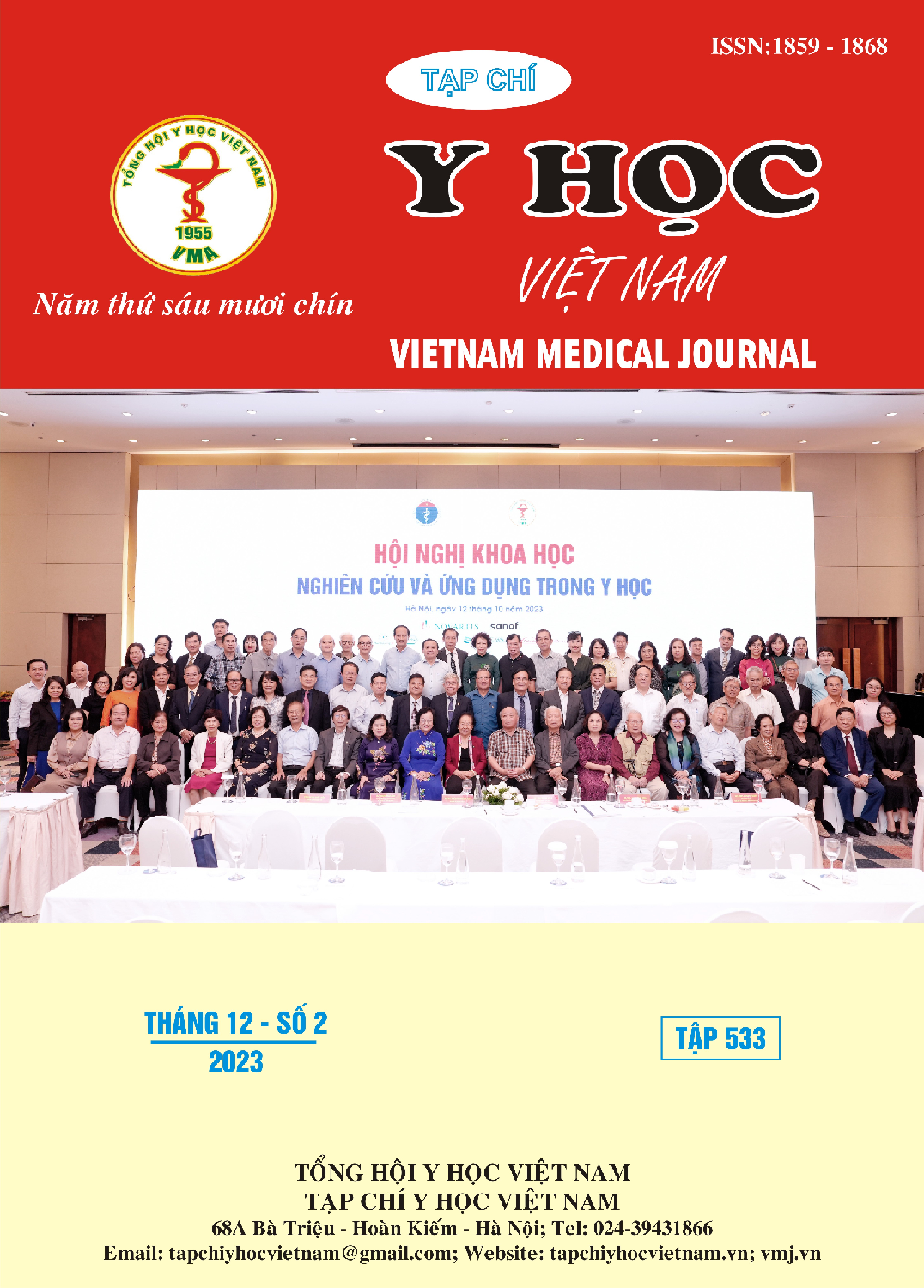SURVEY ON POSTPARTUM DEPRESSION AND SOME RELATED FACTORS IN FEMALE HEALTHCARE WORKERS AT FACULTY OF NURSING AND MEDICAL TECHNOLOGY
Main Article Content
Abstract
Objectives: To survey the rate of postpartum depression (PD) and some related factors in female healthcare workers at Faculty of nursing and medical technology, Pham Ngoc Thach University of Medicine in 2023. Methods: A cross-sectional retrospective study, conducted on 85 female healthcare workers by using a structured questionnaire. Results: The rate of female healthcare workers suffering from PD is 28.2%. There is a relationship between PD and some factors such as: psychological and spiritual issues (OR = 4.8; p < 0.004); feeling pressured when back to work (OR = 2.9; p < 0.042); prefer boy than girl (OR = 7.1; p < 0.001); obstetric history (OR = 3.1; p < 0.021); assisted reproductive therapy (OR = 0.08; p < 0.008) and marital status (OR = 0.26; p < 0.023). Conclusions and recommendations: The percentage of PD among female healthcare workers is about 28.2%. We need to conduct in-depth studies with larger samples. Healthcare facilities should have a strategy for PD screening and support for their female staffs.
Article Details
References
2. Đinh Việt Hùng, Phạm Ngọc Thảo (2022), Nghiên cứu các yếu tố liên quan ở bệnh nhân trầm cảm sau sinh, Tạp chí Y học Việt Nam, Tập 512, tháng 3, số 1, tr.80-84.
3. Huỳnh Nguyễn Phương Quang, Lê Thành Tài (2019), Trầm cảm sau sinh và một số yếu tố liên quan ở phụ nữ có con dưới 6 tháng tuổi tại Thành phố Cần Thơ năm 2019, Tạp chí y dược học Cần Thơ, Số 2-23-24-25/2019.
4. Nguyễn Hoài Thảo Tâm, Huỳnh Ngọc Vân Anh (2019), Trầm cảm sau sinh và các yếu tố liên quan ở phụ nữ sau sinh trong vòng 6 tháng tại Huyện Trảng Bom, Tỉnh Đồng Nai, Y học TP. Hồ Chí Minh, Phụ bản tập 23, Số 5, 2019. Chuyên đề y tế công cộng, tr.268-274.
5. Lê Thị Thúy và cộng sự (2018), Trầm cảm sau sinh và các yếu tố liên quan ở bà mẹ có con dưới 6 tháng đang điều trị tại Bệnh viện nhi Tỉnh Nam Định, Khoa học Điều dưỡng, Tập 1, Số 1, tr.60-64.
6. Lê Thị Thùy, Trần Như Minh Hằng (2018), Nghiên cứu tỷ lệ hiện mắc trầm cảm sau sinh và một số yếu tố liên quan tại Thành phố Huế năm 2016, Tạp chí y dược học – Trường Đại học Y Dược Huế, tập 8, số 3, tr.12-18.
7. Brenda L. Bauman et al (2018), Vital Signs: Postpartum depressive symptoms and provider discussions about perinatal depression - United States, 2018. US Department of Health and Human Services, Centers for Disease Control and Prevention: Morbidity and Mortality Weekly Report. May 15, 2020, Vol.69, No.19, p.757-80.
8. Huong Thi Thanh Nguyen et al (2021), The Rate and Risk Factors of Postpartum Depression in Vietnam from 2010 to 2020: A Literature Review, October 2021, Volume 12, Article 731306. DOI: 10.3389/fpsyg.2021.731306.
9. Mayada Roumieh et al (2019), Prevalence and risk factors for postpartum depression among women seen at Primary Health Care Centresin Damascus, BMC Pregnancy and Childbirth, Article Number: 519(2019).
10. The American College of Obstetricians and gynecologists (2018), "ACOG Committee Opinion No. 757: Screening for Perinatal Depression", Obstet Gynecol. 132(5), pp. e208-e212


